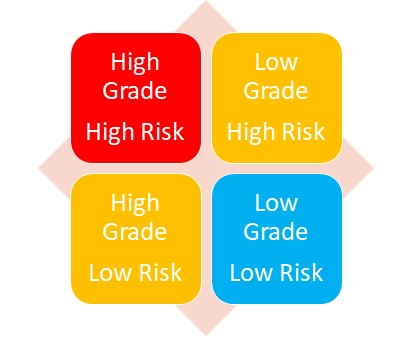Bone stress injuries- What are they and are you at risk?

Bone stress responses are common in the lower limb in endurance sports. Stress fractures in the lower limb account for 80-90% of stress injuries, they represent 0.7-20% of all sports injuries. Stress fracture incidents approac16% of all injuries and is most common in the tibia. Stress fractures occur due to overload or underuse and they are a result of when the rate of stress induced microfracture exceeds the rate of repair.
Diagnosis and Classification
Stress responses can be graded using MRI and there 4 levels of stress response ascending in severity with Grade 5 being a stress fracture.
The location of a bone stress injury can also be categorized into high and low risk dependent on the location of the injury. These are listed below:
|
High Risk |
Low Risk |
|
Anterior Tibia |
Cuboid |
|
Femoral Neck |
1-4 Metatarsals |
|
5th Metatarsal |
Medial Tibia |
| Patella | Calcaneus |
| Sesamoid | Femoral Shaft |
| Tarsal Navicular | Fibula |
Stress injuries can be further classified by linking the grading of the injury and location of the injury. This grading will have an implication for the rehabilitation time with the high risk, high grade requiring longer rehabilitation times than the low grade, low risk injuries- see below.

So what are the risk factors for bone stress injury?
There are a range of intrinsic and extrinsic risk factors that contribute to bone stress injuries. Intrinsic factors are variables that a patient or cohort are able to control, whereas extrinsic factors are variables uncontrollable. The main risk factors are listed below:
- Smoking
- Being involved in an endurance sport
- Biomechanical issues
- Nutritional irregularities
- Caucasian
- Young athlete
- Menstrual irregularities in women
- Increased training load
Rehabilitation
This can be simply split into 2 phases; offload and re-load phases. The offload period normally encompasses a complete removal of sport and activity for a set period whilst symptoms settle. However minimal weight bearing activities can be utilized in this period to maintain cardiovascular fitness provided they do not exacerbate symptoms. During this phase certain intrinsic risk factors are investigated further e.g. nutrition and menstruation abnormalities.
The second phase of rehabilitation requires a gradual reloading. This involves restoring the patient back to full day to day activities and then progressively increasing their exposure to activity. This phase will have a gym based strength element and address any intrinsic risk factors contributing to injury e.g. biomechanical issues and education in training volume.
How can you minimize your risk of bone stress injuries?
There some key principles that will reduce your risk of acquiring a bone stress injury. These are listed below:
- Maintain good bone health- strength training has been shown to increase bone density and reduce risk of bone injury
- Nutrition- ensuring that you are meeting the calorific requirements for your training is a key factor in bone health. Additionally, ensuring that you have adequate Vitamin D and calcium levels will help prevent injury.
- Care with increased in training load. Gradual increases in training volume will minimise risk of all injuries. Additionally, it is important to take care when returning from long periods of rest and progressively return to previous levels of activity.


